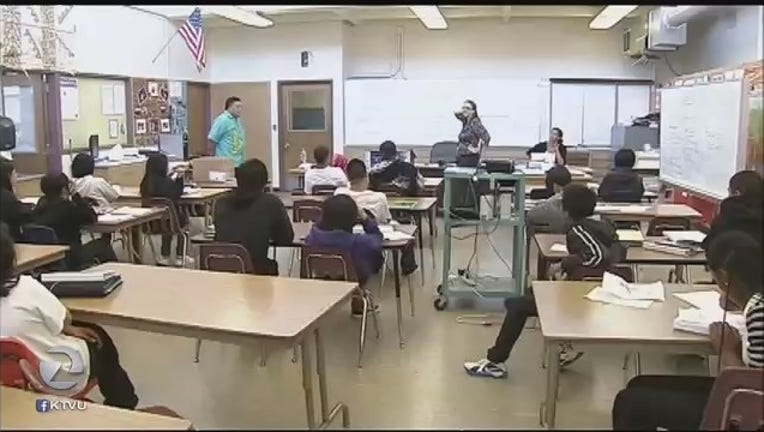SFUSD board rejects effort to change assignment process

SAN FRANCISCO (KTVU and wires) -- An effort to change San Francisco's notoriously complicated school assignment process to give residents a better chance of attending their neighborhood school was voted down 4-3 by the school board Tuesday night.
The proposal, brought forward by San Francisco Unified School District board members Rachel Norton and Sandra Fewer, would have given families living within the attendance area of a neighborhood school a better chance of being assigned to it than those living in other neighborhoods, regardless of demographic or economic factors.
The process for citywide schools would have remained unchanged.
Currently, residents in city census tracts with the lowest average test scores, areas that tend to also be lower income, are given a higher"tie-breaker" priority in school assignments across the city than those within an attendance area.
In practice, the policy means that in the case of a few popular neighborhood schools, area residents might struggle to gain admission because spaces are taken by those from Census Tract Integration Preference areas, or CTIP.
The proposed change would have affected relatively few students, but Norton said the issue is broader than just allowing a handful of families access to popular neighborhood schools.
In a district that has struggled to reduce de facto racial segregation, schools in CTIP neighborhoods are often under-enrolled, racially isolated and lacking in resources because the more affluent and educated families in those areas tend to use their status to transfer out of the neighborhood.
By giving attendance area a higher status, Norton said she hoped to draw more of those families into their struggling neighborhood schools.
"When we prioritize families being able to have expanded choices out of those neighborhoods, they don't go to their local schools," Norton said. "And the effect on those local schools is pretty devastating."
Norton noted that the current system of tiebreakers, which has been in place only since 2010, favors those who have access to transportation and the Internet and who speak English.
"It's sort of layering inequity on top of inequity, and that is what caused us to bring this forward," Norton said of her proposal.
Norton said she was disappointed by last night's vote, but more bothered that there seemed to be no clear consensus on what actions the district should take to reduce racial isolation and help struggling neighborhood schools.
Last night's proposal included an amendment calling for measures to increase diversity at under-enrolled schools, including improved leadership and academic efforts such as language and other magnet programs, and Norton said it was favorably received.
"I'm optimistic that we'll come back with another proposal that's designed to pick up more support," she said.
In a separate item, the board on Tuesday voted to develop a full pre-kindergarten through 12th grade computer science curriculum. District officials hope the curriculum will help increase the number of women and minorities studying computer science and taking the Advanced Placement computer science exam.
While 13 middle schools will offer a course next year, the district estimates it will take several years to develop the full curriculum.

